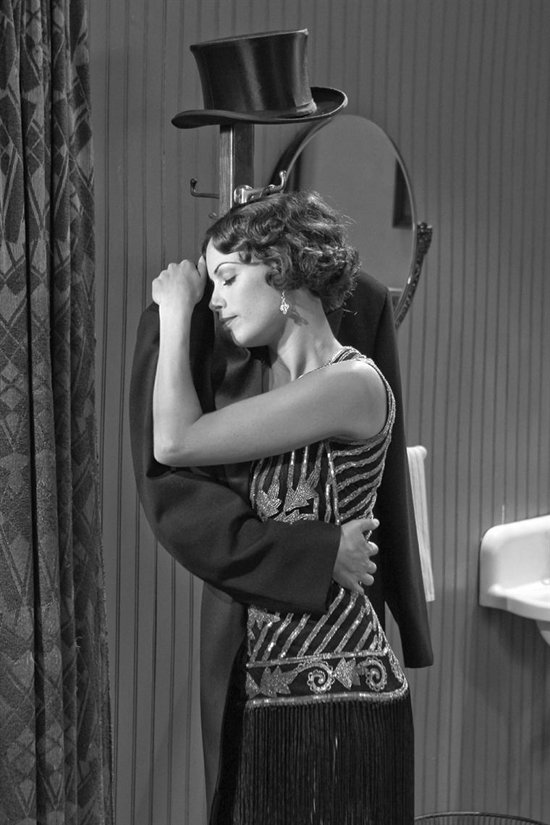Every now and again, a film will come along that dispels the
whole “they don’t make them like they used to” belief, but never before have I
seen a film that actively enforces it. I mean, many films enforce the belief by
being so utterly terrible (just look at last year’s blockbusters), but to see a
film that’s deliberately provoking that vintage nostalgia of cinema at its most
basic form of storytelling is actually quite refreshing.
Hollywood, 1927. George Valentin is a major star in silent
films and at the peak of his career. Outside the premiere of his latest hit, a
young aspiring actress - Peppy Miller - waits patiently for an autograph. A
chance encounter between the two in the chaotic crowd begins the narrative,
charting the rise of Peppy and the fall of George as sound is introduced to
cinema and the great depression begins.
This is visual storytelling at its most rich, yet basic.
Complex emotions and plot developments are reduced to nothing more than a few
simple gestures, dialogue cards (used very sparingly) and visual design. What
the director - Michel Hazanavicius - has done here, is create something that
appears to be very simple, but in actuality is incredibly complex. The lack of
speech has lead every other aspect of the production to do its absolute utmost
to convey the emotions, plot points and ideas. Everything here works in harmony
to stir emotions in an audience the way that all films should.
Look at this picture as an example. Here, Peppy Miller has
snuck into George Valentin’s dressing room to leave a thank you note for an
earlier deed he had done to help her. From the initial spark when they first
met, we had an inkling of their feelings towards each other, but here we get
inside Peppy’s head and what she’s thinking. We see her fantasy and this in
turn reveals her feelings for George in an incredibly original way. It’s a
brilliant play on vision, being slightly comic, but incredibly intimate. These
kind of images perpetuate the film and are what gives it the incredible beauty
that it has.
I can’t really talk about this film without mentioning the
performance of Jean Dujardin as George, which is one of the most prolific and
wonderful performances of the year. Offering charm and charisma, but only as a
mask to hide his cynical bitterness and pride. This is a character that is so
complex that Hazanavicius’ handling of him is simply masterful. The journey we
follow him on is an emotional one, and you really feel for him when he reaches
a crisis point, but also laugh when he’s being funny. It’s rare that a
character can take you on such highs and lows alone in this way. With a
fantastic supporting cast, not one performance takes a bad turn, with John
Goodman playing the traditional fat cat in a suit producer, Bénérice Bejo as
the young Peppy Miller and James Cromwell as George’s loyal and faithful
driver, Clifton. They all have an extraordinary chemistry, which allows you to
forgive the incredible typecasting that has taken place.
However, despite the superb direction, incredible cinematography
and powerhouse performances, it’s own medium as a silent film is the biggest
downfall this film has. Not because it was a bad choice, or because it made it
a bad film. It’s because no matter how much publicity or critical praise it
gets, no matter how many stars you slap on the posters (believe me, there are a
lot), it will not take a lot of money because of the modern mainstream
audience’s aversion to anything that doesn’t involve big guns, explosions or
fart jokes.
But for me, what is most interesting about The Artist is how
relevant it still is today. The main narrative and the sub-plots are all
completely universal, and it offers a critique of the industry that it tells
the story about. The pride of the old with their reaction to new technology,
trying to hold on to their old ways is very allegorical to what is happening
today with the rise of digital technology and the industry’s struggle with
Internet piracy. But past the struggle between old and new, it ultimately is
about how the new can embrace the old and carry it through so that it will
last. You can apply it to many industries, but specifically for filmmakers, the
new generation my be embracing digital technology for its affordability, but
there will always be the utmost respect for celluloid and if the suits let
them, they will preserve and look after film as a means of production for
decades to come.




No comments:
Post a Comment